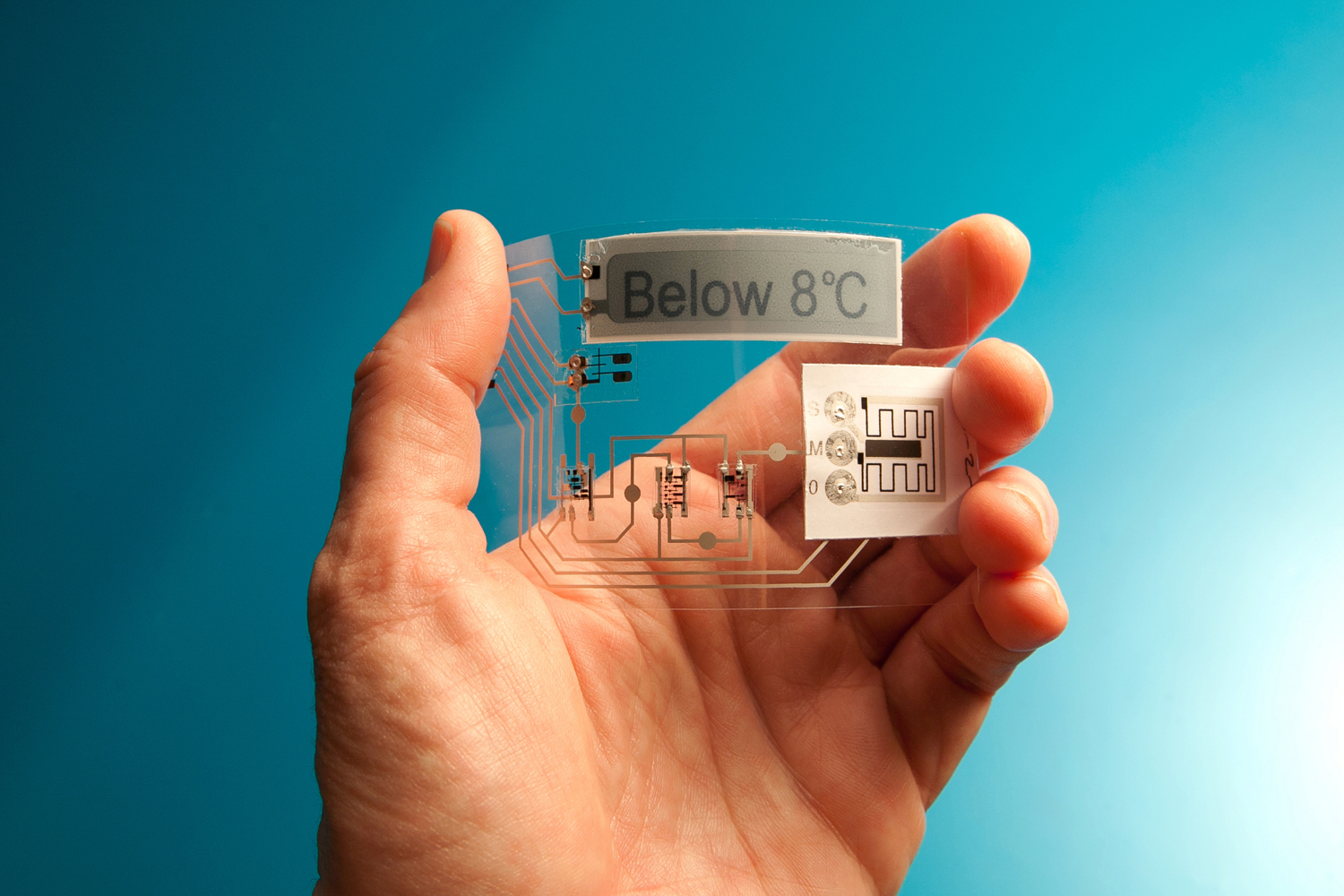[Techtaffy Newsdesk]
Thinfilm demonstrated a proof-of-concept prototype of an integrated printed electronic tag based on rewritable memory. The printed electronic label, consisting of printed memory, sensor and logic, detects that critical temperature thresholds have been exceeded and records data digitally for later retrieval and display.
Such labels can deliver item-level tracking of quality data for goods such as pharmaceuticals and perishable foods. The Thinfilm integrated system shows how low-cost, disposable printed electronic technology will provide information about product history based on data stored in Thinfilm Memory.
Davor Sutija (CEO, Thinfilm): Making electronics ubiquitous requires not only cheap components but also ways of integrating them. The ability to store, process, and communicate local information makes ordinary objects aware of their environment. These smart objects become our agents, gathering actionable data, and displaying it when we need to get involved.
Three different printed devices—memory, logic, and temperature sensor—were shown to work together sensing a temperature threshold and writing to memory. The gathered data triggered a display through external circuitry to illustrate the tags’ expected commercial functionality. Integrating memory, logic, sensors and displays using printed circuitry is critical for the delivery of cost-effective, mass-produced printed electronic devices.
The Thinfilm Temperature Sensor prototype integrates components developed by several Thinfilm eco-system partners. PARC led development of the organic logic circuitry within design rules and functional specifications provided by Thinfilm. PST Sensors provided the fully printed thermistor, and ACREO supplied the electrochromic display.
Additional circuitry, including a timer function and wireless communication, will be added to the system. Commercial availability is expected by the end of 2014.
Portions of this work were funded by Innovation Norway, and by Flextech Alliance.


